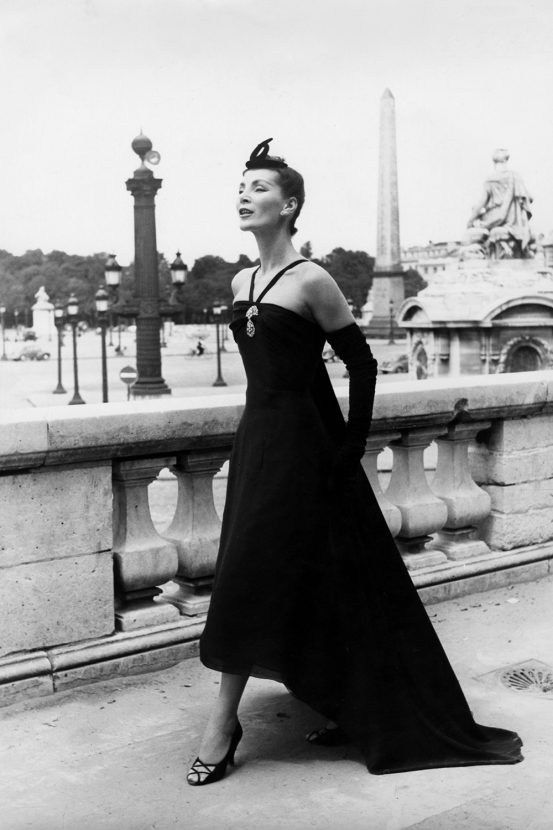
After the jersey suit, the concept of the little black dress is often cited as a Chanel contribution to the fashion lexicon, a style still worn to this day. In 1912–1913, the actress Suzanne Orlandi was one of the first women to wear a Chanel little black dress, in velvet with a white collar. In 1920, Chanel herself vowed that, while observing an audience at the opera, she would dress all women in black.
In 1926, the American edition of Vogue published an image of a Chanel little black dress with long sleeves, dubbing it the garçonne ('little boy' look). Vogue predicted that such a simple yet chic design would become a virtual uniform for women of taste, famously comparing its basic lines to the ubiquitous and no less widely accessible Ford automobile. The spare look generated widespread criticism from male journalists, who complained: "no more bosom, no more stomach, no more rump ... Feminine fashion of this moment in the 20th century will be baptized lop off everything." The popularity of the little black dress can be attributed in part to the timing of its introduction. The 1930s was the Great Depression era, when women needed affordable fashion. Chanel boasted that she had enabled the non-wealthy to "walk around like millionaires".Chanel started making little black dresses in wool or chenille for the day and in satin, crêpe or velvet for the evening.
Chanel proclaimed "I imposed black; it's still going strong today, for black wipes out everything else around."